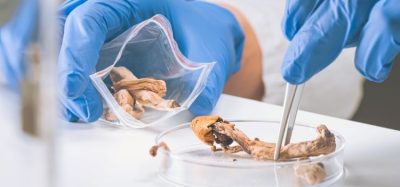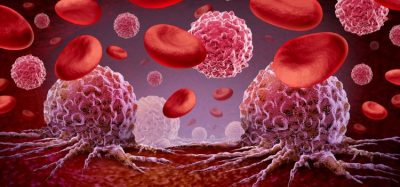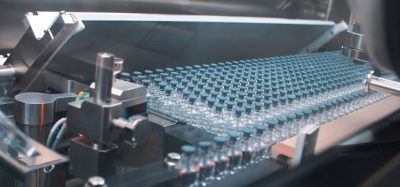FDA approves linagliptin tablets for the treatment of type 2 diabetes
Posted: 3 May 2011 | | No comments yet
Boehringer Ingelheim and Eli Lilly and Company (NYSE: LLY) today announced that the U.S. Food and Drug Administration (FDA) has approved linagliptin tablets, a prescription medication used along with diet and exercise to lower blood sugar in adults with type 2 diabetes.1 The FDA has approved linagliptin as a monotherapy or in combination with other commonly prescribed medications for type 2 diabetes — such as metformin, sulphonylurea and pioglitazone — to reduce haemoglobin A1c (HbA1c or A1c) levels by a mean of up to -0.7 percent (compared to placebo).2 HbA1c is measured in people with diabetes to provide an index of blood sugar control for the previous two to three months. It is used as a marker of efficacy of antihyperglycaemic therapies.
Linagliptin belongs to a class of prescription medications called dipeptidyl peptidase-4 (DPP-4) inhibitors and is the first member of its class to be approved at one dosage strength (5 mg, once daily).1 With linagliptin, no dose adjustment is recommended for patients with kidney or liver impairment. Linagliptin is a tablet that can be taken with or without food. Linagliptin lowers blood sugar in a glucose-dependent manner by increasing incretin levels (GLP-1), which increase insulin levels after meals and throughout the day.1
“Many people with type 2 diabetes are not able to control their blood sugar with diet and exercise alone and may also require one or more medications,” said John Gerich M.D., Professor of Medicine, University of Rochester School of Medicine. “The FDA approval of linagliptin is exciting because there is only one dose to remember for all patients, regardless of kidney or liver impairment. With linagliptin, physicians will have another option for managing type 2 diabetes, a potentially devastating condition.”
Linagliptin 5mg once daily was approved based on a clinical trial programme which included approximately 4,000 adults with type 2 diabetes. Included in the programme were three placebo-controlled studies evaluating linagliptin as monotherapy and in combination with the commonly prescribed oral antihyperglycaemic medications metformin and suphonylurea. Linagliptin showed statistically significant mean difference in HbA1c from placebo of up to -0.72percent when used as monotherapy. In patients who were not adequately controlled on metformin or metformin plus sulphonylurea, the addition of linagliptin resulted in a statistically significant mean difference in HbA1c from placebo of -0.6 percent.3-4
In a fourth study, the initial combination of linagliptin and pioglitazone was compared with pioglitazone alone.5The difference in the adjusted mean HbA1c between the linagliptin and placebo groups was -0.5 percent (p<0.0001).5 For patients taking linagliptin plus pioglitazone, mean HbA1c change from baseline was -1.1 percent compared to a change of -0.6 percent for patients taking pioglitazone alone (p < 0.0001).5
Treatment with linagliptin also produced significant reductions in fasting plasma glucose (FPG) compared to placebo, when used as monotherapy and in combination with metformin, sulphonylurea and/or pioglitazone.2-3, 5-6 Treatment with linagliptin produced significant reductions in two-hour post-prandial glucose (PPG) levels compared with placebo as monotherapy2 and when used in combination with metformin.3 FPG is used to determine glucose levels in a fasting state (usually upon wakening in the morning), and PPG is used to determine glucose levels after meals (usually two hours after eating).
In controlled studies, change from baseline in body weight did not differ significantly between groups when linagliptin was administered as monotherapy,2 in combination with metformin3 or in combination with metformin plus sulphonylurea.4 Patients treated with linagliptin exhibited a significant mean decrease from baseline body weight compared to a significant weight gain in patients administered sulphonylurea (-1.1 kg vs. +1.4 kg. p<0.0001).1Patient weight increased in both the linagliptin plus pioglitazone and placebo plus pioglitazone groups during the study with an adjusted mean change from baseline of 2.3 kg and 1.2 kg, respectively. (p=0.0141).1
“Type 2 diabetes is increasing at an alarming rate and we are proud to offer people in the United States a new treatment option from our Boehringer Ingelheim research laboratories that could potentially help the millions of patients with type 2 diabetes whose blood sugar is not adequately controlled,” said Prof. Klaus Dugi, Corporate Senior Vice President Medicine, Boehringer Ingelheim. “When we introduce a new medicine, our goal is to improve patient care and we are confident that linagliptin will help to achieve that.”
Adverse reactions reported in greater than or equal to five percent of patients treated with linagliptin and more commonly than in patients treated with placebo included nasopharyngitis.1 Hypoglycaemia was more commonly reported in patients treated with the combination of linagliptin and sulphonylurea compared with those treated with the combination of placebo and sulphonylurea.1 The incidence of hypoglycaemia was similar to placebo when linagliptin was administered as monotherapy or in combination with metformin or pioglitazone.1 Pancreatitis was reported more often in patients randomized to linagliptin (one per 538 person years versus zero in 433 person-years for comparator).
Linagliptin should not be used in patients with type 1 diabetes or for the treatment of diabetic ketoacidosis (increased ketones in the blood or urine). It has not been studied in combination with insulin.1
The FDA approval of linagliptin marks the first regulatory milestone since the formation of the Boehringer Ingelheim and Eli Lilly and Company worldwide diabetes alliance in January 2011. The alliance leverages the collective scientific expertise and business capabilities of two leading research-driven pharmaceutical companies to address patient needs arising from the growing global diabetes epidemic.
“Our alliance with Boehringer Ingelheim represents one of the most robust diabetes pipelines in the pharmaceutical industry,” said Enrique Conterno, President of Lilly Diabetes. “Linagliptin is the first regulatory approval of what we hope will be many new treatment options this alliance brings to the millions of people living with type 2 diabetes.”
The overall clinical development programme for linagliptin tablets consists of 30 studies completed, underway or planned. Linagliptin is currently under regulatory review in the EU and Japan.
About Diabetes
Approximately 25.8 million Americans7 and an estimated 220 million people worldwide8 have type 1 and type 2 diabetes. Type 2 diabetes is the most common type, accounting for an estimated 95 percent of all diabetes cases. Diabetes is a chronic disease that occurs when the body either does not properly produce, or use, the hormone insulin.9
References
- Tradjenta™ (linagliptin) tablets. HIGHLIGHTS OF PRESCRIBING INFORMATION. Initial U.S. Approval: 2011.
- Del Prato S, Barnett AH, Huisman H, et al. Effect of linagliptin monotherapy on glycaemic control and markers of beta-cell function in patients with inadequately controlled type 2 diabetes: a randomized controlled trial. Diabetes Obes Metab. 2011 Mar;13(3):258-67.
- Taskinen MR, Rosenstock J, Tamminen I, et al. Safety and efficacy of linagliptin as add-on therapy to metformin in patients with type 2 diabetes: a randomized, double-blind, placebo-controlled study. Diabetes Obes Metab. 2011 Jan;13(1):65-74.
- Owens DR, Swallow R, Woerle HJ, et al. Linagliptin improves glycemic control in type 2 diabetes patients inadequately controlled by metformin and sulfonylurea without weight gain and low risk of hypoglycemia. 70th American Diabetes Association Scientific Sessions. Orlando, Florida, U.S.A.; 2010. p. Poster 548-P.
- Gomis R, Espadero RM, Jones R, et al. Efficacy and safety of initial combination therapy with linagliptin and pioglitazone in patients with inadequately controlled type 2 diabetes: a randomized, double-blind, placebo controlled study. Diabetes Obes Metab. 2011 Mar 15.
- Lewin AJ, Arvay L, Liu D, et al. Safety and efficacy of linagliptin as add-on therapy to a sulphonylurea in inadequately controlled type 2 diabetes. 46th Annual Meeting of the European Association for the Study of Diabetes. Stockholm, Sweden; 2010. p. Poster 821-P.
- Centers for Disease Control and Prevention. National Diabetes Fact Sheet 2011. Available at HYPERLINK “http://www.cdc.gov/diabetes/pubs/pdf/ndfs_2011.pdf”. Accessed on: April 27, 2011.
- World Health Organization. Fact Sheet No. 312: What is Diabetes? Available at: HYPERLINK “http://www.who.int/mediacentre/factsheets/fs312/en/” Accessed on: April 27, 2011.
- International Diabetes Federation. Diabetes Atlas. 3rd edn. Brussels: International Diabetes Federation, 2006.
Related topics
Related organisations
Boehringer Ingelheim, Eli Lilly & Company, Food and Drug Administration (FDA)









